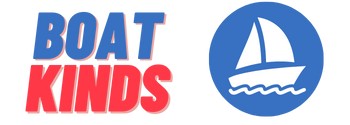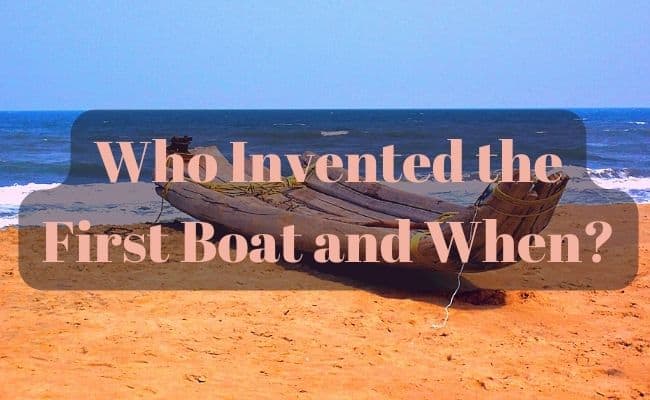Introduction: Humanity’s First Voyage
Boats are among the oldest human inventions—a result of our need to explore, survive, trade, and migrate across water. Long before roads or the wheel, early humans ventured onto lakes and rivers using primitive vessels. But who invented the first boat? And when exactly did this transformative moment occur? In this in-depth guide, we dive into archaeology, mythology, and maritime engineering to trace the origin of the boat.
What Is a Boat, Technically?
A boat is defined as a small to medium-sized watercraft that floats on water and is propelled by paddles, poles, sails, engines, or even animal power. Unlike larger ships, boats are usually designed for rivers, lakes, coastal waters, or specific tasks like fishing, transport, or recreation.
Etymology: The word “boat” stems from the Old English bát, related to Dutch boot and German Boot.
The First Physical Evidence: The Pesse Canoe (ca. 8040 BCE)
- Discovered in: Drenthe, Netherlands
- Made from: A single hollowed tree trunk (oak)
- Dating to: 8040–7510 BCE (Mesolithic period)
- Significance: The world’s oldest known boat
The Pesse Canoe, unearthed during the construction of a highway, is a dugout canoe crafted using rudimentary tools. At over 10,000 years old, it provides indisputable proof that humans developed advanced woodworking skills and an understanding of buoyancy much earlier than previously believed.
Civilizations and Boat Invention: A Global Effort
While the Pesse Canoe is the oldest surviving boat, various ancient cultures invented different types of watercraft independently. Here are some key contributors:
1. Mesopotamia (Iraq Region, ca. 4000 BCE)
- Used reed boats sealed with bitumen
- Operated along the Tigris and Euphrates Rivers
- Essential for irrigation, trade, and communication
2. Ancient Egypt (ca. 3000 BCE)
- Constructed wooden planked boats with sails
- Used for transportation on the Nile River
- Depicted in tombs and temple carvings
3. Indus Valley (ca. 2500 BCE)
- Used simple boats for river transport and trade
- Evidence found in Harappa and Mohenjo-daro relics
4. China (ca. 5000–4000 BCE)
- Developed paddle-driven and sail-powered boats
- Used for rice transport along the Yangtze River
5. Austronesian Peoples (ca. 2000 BCE and earlier)
- Invented the outrigger canoe
- Pioneered ocean navigation using stars and wave patterns
- Reached Madagascar, Polynesia, and Hawaii
Evolution of Boat Designs
The earliest boats were utilitarian, crafted from available resources. As tools improved, so did designs.
Early Boat Types
| Boat Type | Material | Purpose | Culture/Region |
|---|---|---|---|
| Dugout Canoe | Hollowed tree trunks | Fishing, transport | Europe, Asia, Africa |
| Reed Boats | Bundled papyrus/reeds | River travel | Egypt, Mesopotamia |
| Rafts | Logs, bamboo | Cargo/fishing | Pacific Islands, Asia |
| Skin Boats | Animal hides + frame | Arctic hunting | Inuit, Siberia |
| Coracles | Woven frame + hide | River crossings | British Isles, India |
Technological Milestones
- Invention of the sail: Ancient Egypt (~3000 BCE)
- Introduction of keel and rudder: China (~1000 BCE)
- Use of iron nails and caulking: Roman period
- Steam power: 18th century
- Internal combustion engines: 19th century
Boats in Mythology and Oral Traditions
- Noah’s Ark – Biblical story
- Utnapishtim’s boat – Epic of Gilgamesh
- Manu’s ship – Hindu mythology
These tales reflect the cultural and spiritual importance of boats as life-saving vessels in great floods, likely inspired by real natural disasters.
What Did It Take to Invent a Boat?
- Tool-making skills
- Understanding buoyancy and hydrodynamics
- Availability of materials (wood, reeds, skins, etc.)
- Environmental demand
- Generational knowledge transfer
Timeline of Key Boat Inventions
| Year | Innovation | Region/Civilization |
|---|---|---|
| 8040 BCE | Pesse Canoe | Europe (Netherlands) |
| ~5000 BCE | Reed Boats | Mesopotamia, Egypt |
| ~3000 BCE | Wooden Planked Boats | Egypt |
| ~2000 BCE | Outrigger Canoes + Navigation | Austronesian Islands |
| ~1000 BCE | Rudders, Deep-Water Vessels | China |
| 1700s CE | Steam-Powered Boats | Europe |
| 1800s CE | Steel-Hulled Ships | Global |
| 1900s-Today | Motorboats, Submarines, Yachts | Global |
FAQ (Structured for Schema)
Q: Who invented the first boat?
A: There is no single inventor. The oldest known boat is the Pesse Canoe (8040 BCE) from the Netherlands.
Q: When was the first boat made?
A: Archaeological evidence shows that the first boat was made around 8040 BCE during the Mesolithic period.
Q: What is the Pesse Canoe?
A: A 10,000-year-old dugout canoe found in the Netherlands. It’s the oldest known surviving boat.
Q: Which civilization advanced boat technology the most?
A: Ancient Egyptians and Austronesians made major advancements—one with sails and river trade, the other with ocean navigation.
Q: Are mythological boats real?
A: Stories like Noah’s Ark are symbolic and not supported by archaeology, though they reflect the importance of boats in early survival narratives.
Final Thoughts: A Collective Innovation
The boat was not invented in one place by one person. Instead, it emerged in different regions in response to human needs, available materials, and environmental challenges. From hollowed-out logs to satellite-equipped yachts, the story of the boat is a testament to our ingenuity and enduring connection to water.
Stay curious, and keep exploring—by land or by sea.





